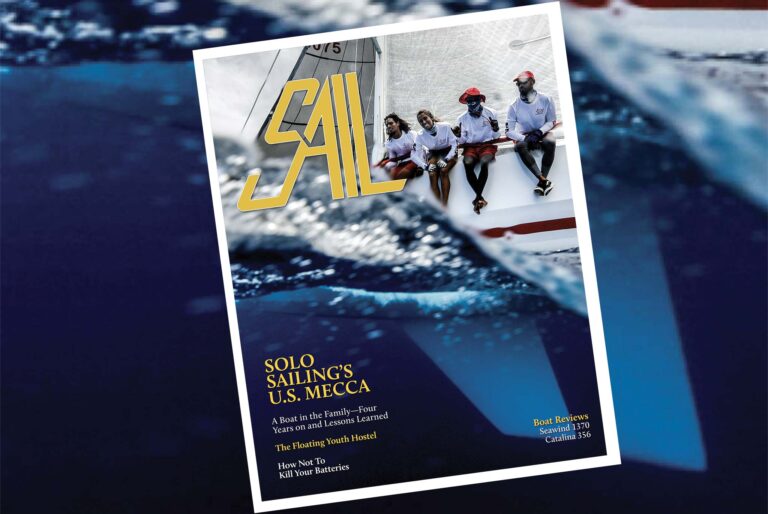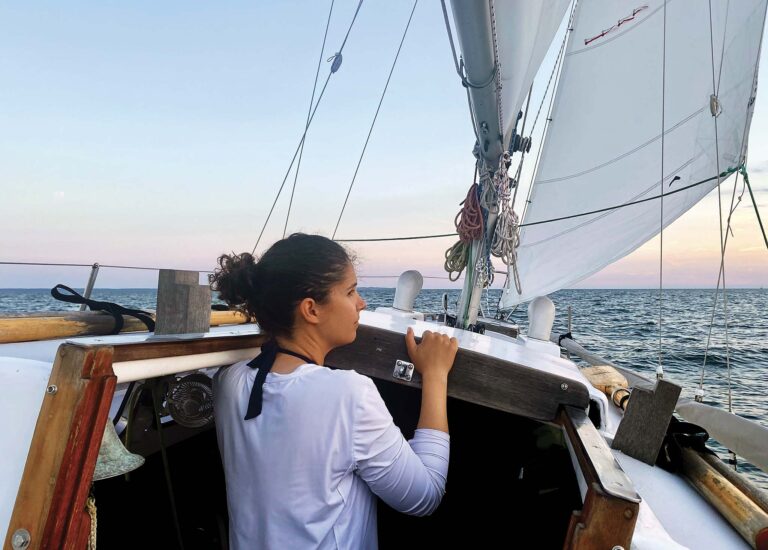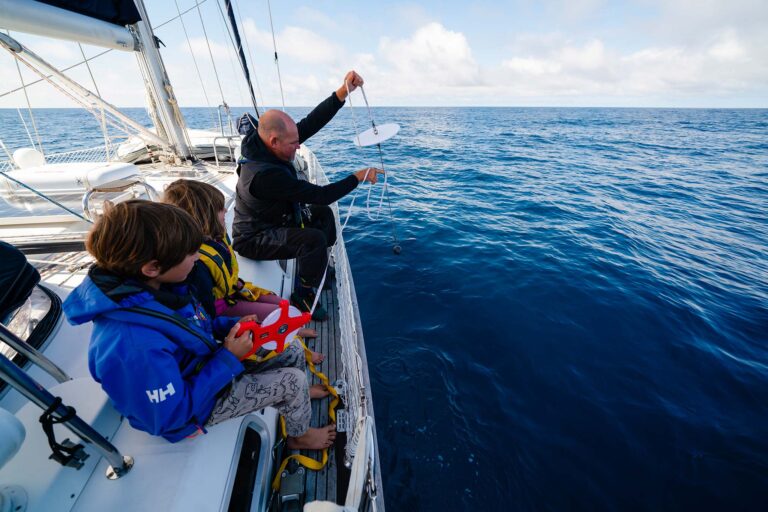
Whither the mast-mounted halyard winch?
Just as all roads once led to Rome, many sailors now believe that all working lines should lead to the cockpit. The result, unfortunately, is often a pile of multi-colored spaghetti that is hard to manage and can actually make it harder to sail your boat.
On many modern sailboats, almost every line coming off the mast or deck forward of the cockpit is led aft through blocks and organizers to a battery of rope clutches arrayed around two winches on either side of the companionway under the cockpit dodger. On race boats this may not be too troublesome. The dodger is usually removed so the companionway winches are easy to access and grind, and the tails of all active lines are simply flung down the companionway into the main cabin. With plenty of crew aboard, each companionway winch also has a grinder on it, and there are people at the mast to jump halyards and clear any snags in any line running back to the cockpit.
On a cruising boat, however, the all-lines-to-Rome strategy is a two-edged sword. One big problem is winch access. With the cockpit dodger raised, companionway winches are often much harder to use. Line storage and organization is another problem. Also, lines that must be handled more or less simultaneously are often led to the same winch, which means you must load and unload one winch repeatedly to accomplish one task. Yet another issue is increased friction in line runs.
It does make sense to lead some lines aft. Lines needing relatively infrequent small adjustments—topping lifts, vang lines, spinnaker downhauls and mainsail outhauls, for example—are good candidates. But in my opinion, the busier lines, particularly the main halyard and mainsail reefing lines (assuming a slab-reefed main), are best controlled at the mast.
It boggles my mind that some people now believe it is actually dangerous to have to leave the cockpit to reef a mainsail. I seem to remember there was a time when you not only went to the mast to reef the main, but you also routinely went to the bow to change headsails, and this on boats that didn’t have lifelines ringing their decks. Perhaps in the future, we will have lifelines around our cockpits, but meanwhile—and pardon me for saying this—if you are afraid to go to the mast it may be time to trade in your sailboat for a powerboat.
In my own mind, it is largely a matter of convenience. It is much easier for a single crewmember to hoist a mainsail working at the mast. You can quickly haul the line hand over hand for much of the hoist, then resort to the winch to finish it off. On smaller boats, you really only need the winch to tension the halyard after the hoist is complete. The whole job is finished in less than a minute. Hoisting a main alone from the cockpit, you’ll be grinding the winch almost all the way up, due to all the extra friction in the line run. It takes much longer and is also more tiring.
It’s the same deal with reefing. It’s faster and easier doing it all at the mast, plus you have a clear view of the sail the entire time. With cockpit-led reef lines, by comparison, you are often ducking in and out from under the dodger to check on your progress. Because you are usually working more slowly, lines are also more likely to get tangled, which may—gasp!—require you to leave the cockpit to untangle them.
In truth, the only real advantage to doing all your line-handling in the cockpit is that you are less likely to get wet there. I get that. Most adult humans generally prefer to stay dry except when bathing. Some, I imagine, would get themselves dry-cleaned if possible. But here’s the thing about boats: they aren’t really tools to keep you from getting wet; they are tools to keep you from drowning.
The answer to the problem is clothing. As some wise old mariner once said: there’s no such thing as bad weather, so long as you are properly attired. Because I always set up my boats to reef at the mast, I probably spend more time than many dressed in foulies while sailing. I like to be able to reef at a moment’s notice, and I like to do it in just a moment. To me, it seems safer than the alternatives.
September 2018









